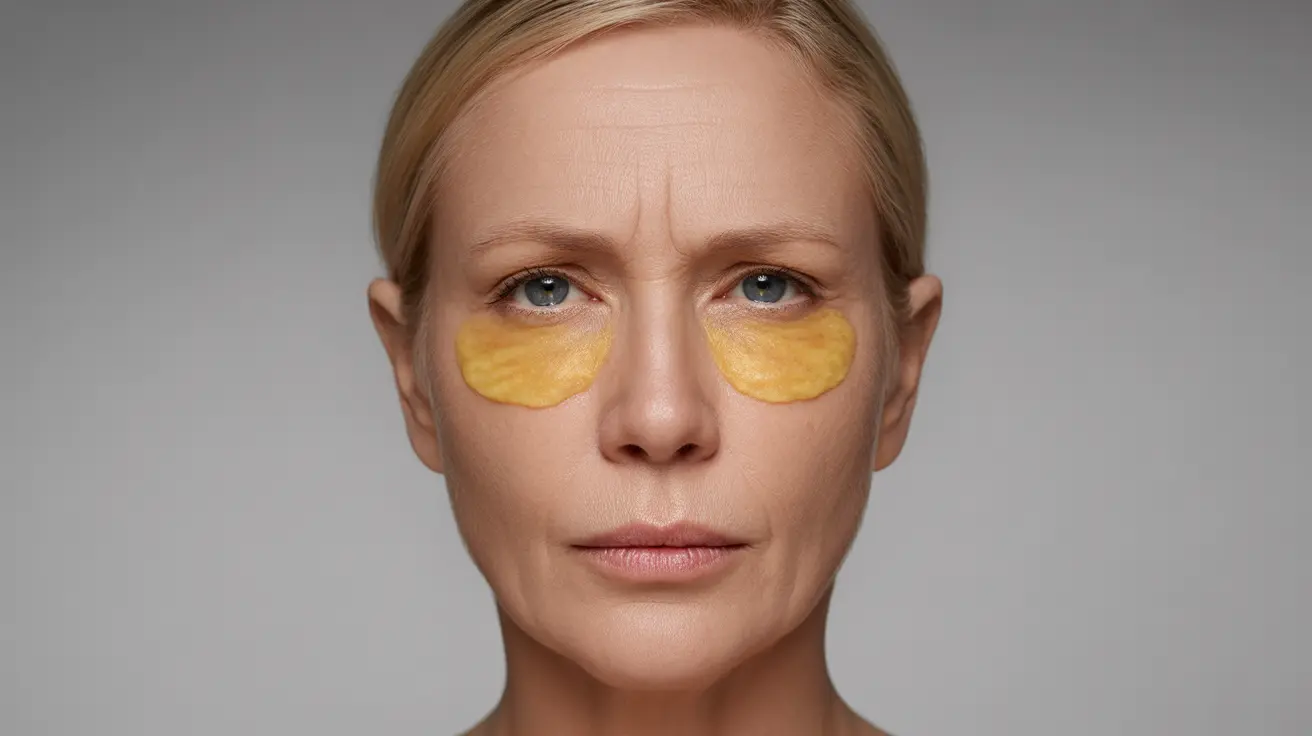High cholesterol doesn't always remain hidden inside your body. Sometimes, it can manifest through visible signs on your face, particularly around your eyes and skin. Understanding these external indicators can help you identify potential cholesterol problems early and seek appropriate medical attention.
While blood tests remain the definitive way to diagnose high cholesterol, being aware of its visible symptoms can serve as an important early warning system. Let's explore the key signs of high cholesterol that might appear on your face and what they mean for your health.
Common Facial Signs of High Cholesterol
Xanthelasma: Yellow Deposits Around the Eyes
One of the most distinctive signs of high cholesterol on the face is xanthelasma, which appears as yellowish, slightly raised patches or bumps around the eyes, particularly on or near the eyelids. These deposits are made up of cholesterol and other lipids that accumulate under the skin.
These patches typically:
- Are soft to the touch
- Have well-defined borders
- Develop symmetrically on both sides of the face
- Progress slowly over time
- Don't cause pain or discomfort
Other Facial Manifestations
High cholesterol can also cause additional skin changes on the face, including:
- Xanthomas (larger cholesterol deposits) on other parts of the face
- Small, yellow-white spots called eruptive xanthomas
- Premature aging of facial skin
- Changes in skin texture or appearance
Understanding the Connection
The appearance of these cholesterol-related skin changes often indicates an underlying lipid disorder. While not everyone with high cholesterol will develop these signs, their presence should prompt medical evaluation, especially if you have other risk factors for cardiovascular disease.
When to Seek Medical Attention
You should consult a healthcare provider if you notice:
- Sudden appearance of yellow patches around your eyes
- Progressive growth of existing patches
- Multiple spots or deposits appearing on your face
- Family history of high cholesterol along with skin changes
Treatment Options and Management
Addressing facial signs of high cholesterol typically involves a two-pronged approach: treating the underlying high cholesterol and addressing the visible skin manifestations. Treatment options may include:
Managing Cholesterol Levels
Your doctor may recommend:
- Cholesterol-lowering medications
- Dietary modifications
- Regular exercise
- Lifestyle changes
Addressing Visible Signs
For the visible facial manifestations, several treatment options exist:
- Surgical removal
- Laser therapy
- Chemical cauterization
- Radiofrequency ablation
Frequently Asked Questions
What do yellowish plaques or bumps on my eyelids indicate about my cholesterol levels? Yellowish plaques or bumps on your eyelids, known as xanthelasma, often indicate elevated cholesterol levels in your blood. However, they can sometimes occur even with normal cholesterol levels, particularly in older adults.
How can I tell if the skin changes on my face are signs of high cholesterol? Look for yellowish, slightly raised patches, particularly around your eyes. These patches are usually symmetrical, painless, and develop gradually. However, only a healthcare provider can definitively determine if these changes are related to high cholesterol.
What treatment options are available for removing xanthelasma caused by high cholesterol? Treatment options include surgical excision, laser therapy, chemical cauterization, and radiofrequency ablation. The choice of treatment depends on the size, location, and severity of the deposits, as well as individual factors.
Can high cholesterol cause other visible skin conditions besides xanthelasma on the face? Yes, high cholesterol can cause other skin manifestations, including xanthomas (larger cholesterol deposits) on various parts of the face and body, and eruptive xanthomas (small, yellow-white spots).
When should I see a doctor if I notice yellowish bumps or patches around my eyes? You should consult a healthcare provider as soon as you notice these changes, especially if they appear suddenly, continue to grow, or are accompanied by other symptoms. Early evaluation can help identify and address underlying health issues.




